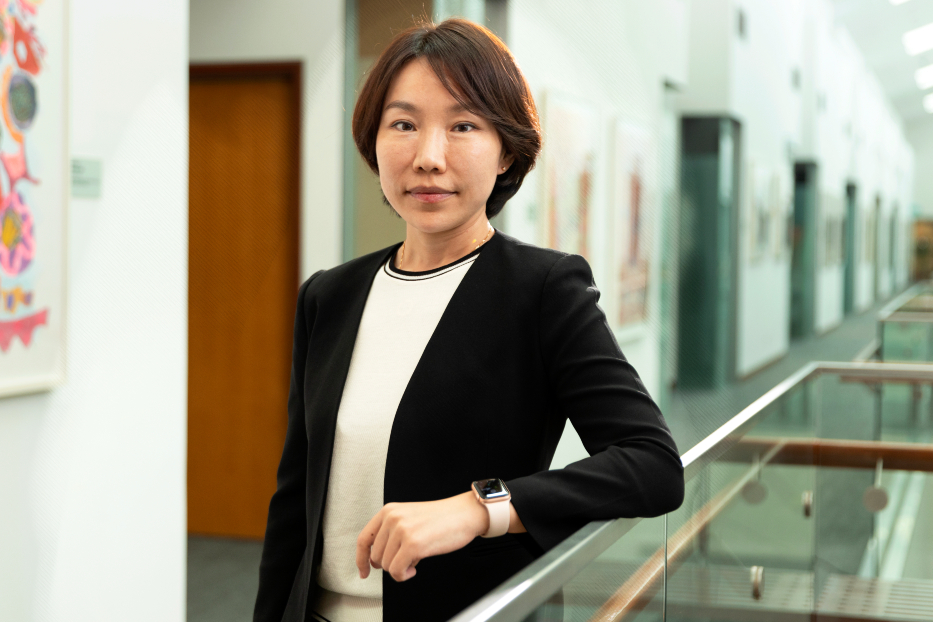Prof Li Jing

Feature on Li Jing, Assistant Professor of Economics
School of Economics, Singapore Management University
How economic choices might reshape our cities
The COVID-19 pandemic not only changed the way we work and live, but might also change how we plan our cities in the long term. Through her urban economics research, Li Jing, Assistant Professor of Economics, Singapore Management University (SMU), uncovers how our economic choices help form the shape of our cities.
As economic activity receded from the city centre into the suburbs during the pandemic, talk about the daily commute from the bedroom to the living room became a running joke. But the change put the spotlight on serious questions, not just about how to manage work, school, and family life in one room, but how we arrange our cities to manage economic and civic life.
The shifts we saw during the pandemic could reshape cities in significant ways, says Li Jing, Assistant Professor of Economics. How cities are laid out is the focus of her research in urban economics.
“Essentially, urban economics is about location and space, and how that affects a multitude of areas, from housing and transport to innovation” she says. Li lists the many questions that inspired her to study urban economics, but which others may take for granted, at least until we experience a disruption like the pandemic. “Take for example labour supply—what motivates workers when they choose a place to live? Why do people choose big cities? It’s very interesting how all these factors are intricately linked.”
Globally, cities have grown in similar shape, which points to some profound, almost universal trends that affect how we live and how our economies develop.
One fundamental economic phenomenon disrupted by the pandemic is grounded in the theory of the ‘monocentric city model,’ as Li explains. “Most cities have a centre and a residential area around the periphery, and as you move from the centre outwards you find declining density and declining house prices.” Economists summarize this change in price and demand for housing based on the distance from the central business district, as the ‘bid rent function’.
“The drop in house prices as you move from the city centre tends to be determined by the underlying travel cost and the need to commute,” adds Li, whose research has found that the cost and convenience of the daily commute is a powerful factor in determining how much people will pay for inner-city housing. She was aided in this research by another unique institutional feature: Singapore’s car ownership scheme, the Certificate of Entitlement (COE) for car ownership. The COE’s price fluctuates according to factors such as demand for vehicles.
Li devised a way to use this fluctuating price as a proxy for the cost of commuting, and so was able to measure how changes to that cost affected the ‘bid rent function’, in her recent paper, The Impact of the Cost of Car Ownership on House Price Gradient in Singapore.
Her findings revealed a close relationship between housing and commuting choices: when COE prices increased, inner city house prices increased more. “People might prefer to spend on their house rather than a commute, and the opposite also holds–the more affordable a car, the further from the city centre people are more willing to live.”
The pandemic may have injected new factors into this equation. House prices in the periphery areas of cities have been rising significantly faster than those in the CBD as the need to commute recedes. “With many people working from home, the price gap between the city centre and the suburbs has narrowed”, says Li. This trend, she adds, has been observed not just in Singapore, but in major cities in the United States, such as New York and San Francisco.
City connections and innovation
Urban economics is by no means just about housing and transport; when planning our cities we need to understand trends that are less observable but just as profound. Concerns are emerging, for example, that the trend toward working from home may erode innovation, which has been found to flourish in the presence of intensive personal interactions enabled by high population density, included by Li’s research.
Li unearthed links between the building of subways and the fostering of innovation in her recent study, Subway, Collaborative Matching, and Innovation. For this research, she analysed how the rapid expansion of the Beijing’s subway system from 2000 to 2018 affected collaborative matches across locations and the spatial organisation of innovation activities within the city.
“We found that when the travel time between two locations is substantially reduced, there is a corresponding significant increase in both the probability and intensity of collaborations between innovators at the two locations,” she explains. This points to the importance of a city’s infrastructure in elevating the overall level of innovation within a region.
The findings have important policy implications, Li noted. “It helps to justify government spending on expensive transport infrastructure, such as subways. Beyond the usual reasons of raising productivity through less congestion and faster commutes, it shows broader economic gains through facilitating innovation, which in turn drives economic growth.”
Speaking of her passion for urban economics, Li explains that this is an example of why she finds her research purpose a very fulfilling one. “We are producing evidence based on data–we’re not proposing models based on pure assumptions. I think that’s important because the issues that we are looking into concern people’s everyday lives. The product of the rigour of our research can form the foundation of policy making.”
Most economists, Li believes, “share the same hopes as me in wanting to produce work that can contribute to a better world through shaping policy making decisions.”